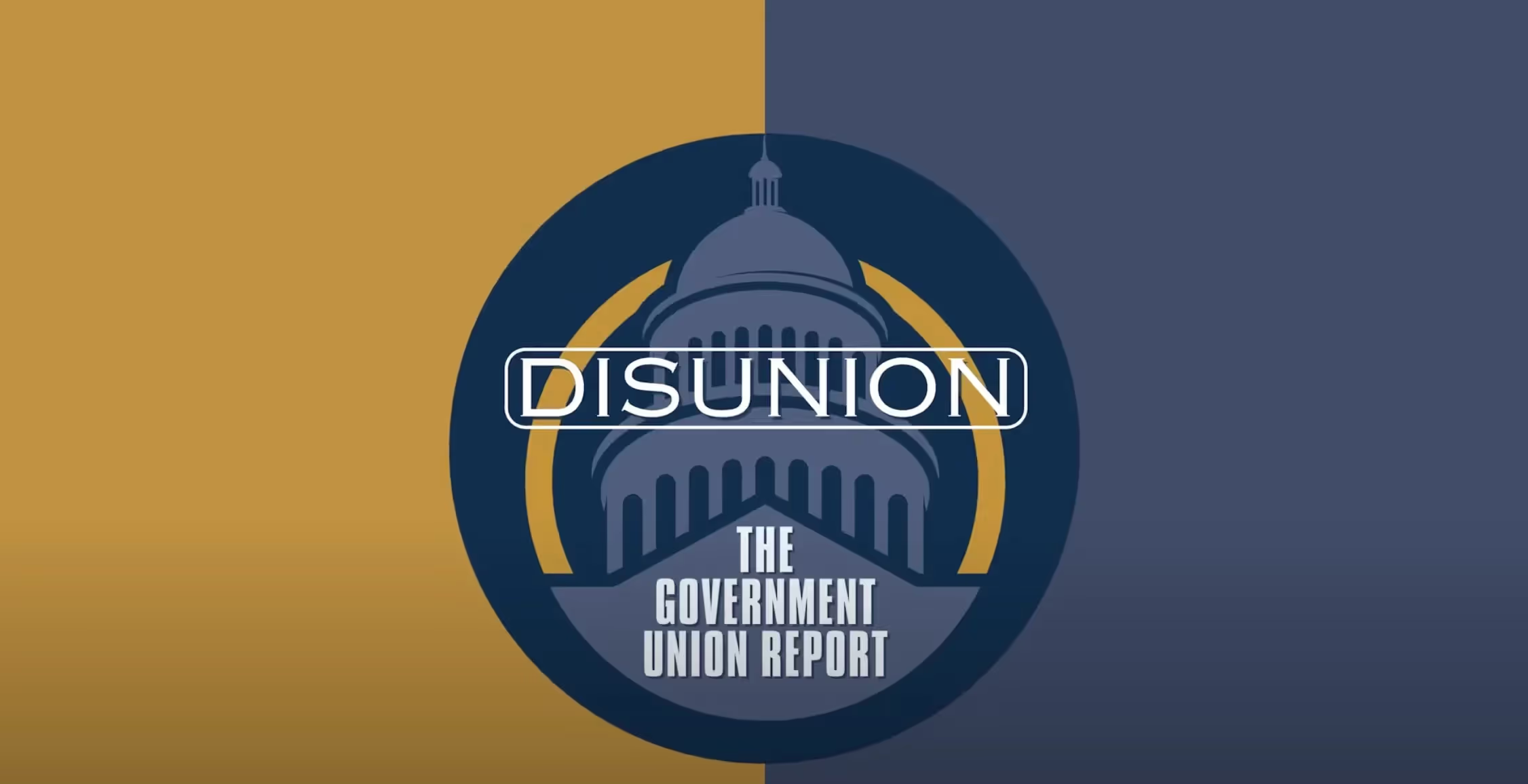.avif)
Return to Economic Growth
Economic growth is indispensable for human well-being and, crucially, for upholding the promise of America.
In times of economic uncertainty, people are invariably happy when they hear good economic news. Many Americans were heartened to read The Economist's recent glowing report on the US economy. It stated that America had increased its share of the G7’s GDP to 50 percent and achieved a 40 percent higher per-capita output than Western Europe and a 60 percent higher per-capita output than Japan.
These numbers demonstrate that the US economy is doing better than its peers. However, they cannot disguise an underlying problem in that same economy. In the mid-1990s, America’s economy regularly exceeded 4 percent annual GDP growth. Since 2001, however, it has (barely) cracked 3 percent just three times (excluding the post-lockdown bounce-back). Granted, America’s annual growth rate has exceeded those of the eurozone and Japan over the same time period—but not by much. While the downward shift in global growth began earlier in the eurozone and Japan in the 1990s and started later in China in the 2010s, America has not bucked the general global trend.
Economic growth, understood as an increase in the size of a country’s economy and productivity over a period of time, is not the summit of human happiness. Nor does it magically resolve everyone’s problems. Nonetheless, economic growth is indispensable for human well-being and, crucially, for upholding the promise of America. Absent growth, “the life of man,” as Thomas Hobbes wrote, would be “solitary, poor, nasty, brutish, and short.”
Low growth is not optimal either. It reflects truncated productivity, meaning fewer jobs, higher unemployment, and less investment in the US economy. Subpar growth also reduces America’s capacity to fund its national security goals. It compromises Americans’ ability to fund the humanities, the sciences, art, philanthropy, and rich associational life that make human life more humane. Lastly, low growth slows down the pace at which those on the margins can escape poverty and diminishes the means that might otherwise be available for us to help the truly helpless.
All modern economies have their ups and downs. That reality, however, cannot mask the discouraging long-term trajectory of growth in America. It also forces us to ask how we put America back onto a high-growth path.
The Non-Mystery of Growth
The good news is that there is no mystery about what accelerates economic growth. We know, for instance, that innovation, economic liberty, and aligned incentives are essential.
Innovation is more than creating new technologies that make us more efficient and productive. “Economic growth occurs,” writes Nobel economist Paul M. Romer, “whenever people take resources and rearrange them in ways that are more valuable.” By themselves, the world’s material resources are finite, but ideas are not. Innovation is driven by people thinking about using finite resources and existing products in new and effective ways. Growth does not, therefore, come from using ever-increasing amounts of the world’s finite resources. Instead, it is about deploying our minds to render the finite on planet Earth more infinite.
This process works better when people are incentivized to be creative: they believe that if they take the risk to innovate, and if that innovation translates into something that investors believe will be profitable, and if consumers decide to buy that product or service, they will be rewarded. This, in turn, depends upon allowing innovators to be creative and take risks, on investors being at liberty to put their capital behind such innovations, and on consumers having the freedom to choose whether they will purchase new products.
The quality of the institutions in which economies are embedded is also vital for growth. By “institutions,” I mean monetary stability, property rights, and the rule of law. If such institutions are not robust, economic innovation and, thus, growth are difficult to sustain over time.
But the economic efficacy of these institutions is further determined by the value commitments that permeate them and the economy as a whole. For example, suppose people do not hold to the principles of natural justice, which are central to the rule of law. In that case, its capacity to preserve the high legal certainty required to facilitate growth will be weakened. More generally, as another Nobel economist, Edmund S. Phelps, has illustrated, an economy in which a much higher premium is attached to economic security than economic liberty will invariably be less dynamic and grow more slowly than an economy in which entrepreneurship, risk-taking, and freedom, in general, are highly valued. Such intangibles, it turns out, matter.
Growth Impediments, Growth Skepticism
If this explanation of the causes of growth is true, the path forward is clear: American policymakers must diminish impediments to innovation and economic liberty. They must correctly align incentives for investors, producers, and consumers to engage profitably in the economy. This will demand bolstering private property rights, the rule of law, and monetary stability. More generally, we all need to take far more seriously the norms that incline Americans to value liberty and creativity.
The same explanation for growth, however, indicates that any significant corrosion of innovation, economic freedom, property rights, the rule of law, and monetary stability will translate into meaningfully less growth. Alas, America has experienced some overall decline or barely marginal improvement in all these areas since the late 1990s. That is a recipe for second-rate or declining growth in the future.
Further diminishing the prospects for growth is the overall expansion in the size of government in America since 2007. When governments raise taxes to fund or expand entitlement programs, they consume capital that might have otherwise been available for the private sector, which is more efficient at allocating and using capital. On another level, the more welfare and entitlement programs grow, the weaker the incentives for people to work. It is no coincidence that the trend of young men checking out of the US workforce began with the onset of Lyndon Johnson’s Great Society programs and has steadily increased ever since. That suggests a weakening attachment to the values that matter for productivity and long-term growth.
Compounding these problems are many Americans’ embrace of populist rhetoric and economic nationalist policy proposals since the mid-2010s. Whether they are on the left or right, growth is not a priority for the economic nationalists who have partially undermined the free market pro-growth consensus that once embraced most of the American right and many moderate Democrats. Instead, the economic nationalists’ focus is on redistributing wealth via entitlement programs and industrial policy in many cases. They also want to shelter the US economy from foreign competition that, like all competition, incentivizes Americans to be more innovative and productive.
The precise goals of today’s economic nationalists vary. Some want to use government interventions to augment particular regions' economic well-being. Others want to shift capital investment from one economic sector to another to benefit (so they believe) specific demographic groups. But whatever the motives, all these measures likely mean less or slower growth because they involve the state directing capital and other resources to less productive economic sectors. When this is pointed out to economic nationalists, their responses range from “so be it” to claims that America should reject a cult of growth.
There is, however, another group intent on deemphasizing the growth imperative. Presently more influential in Western Europe than America, the degrowth movement regards the pursuit of economic growth as having inflicted substantial environmental damage and generating gross inequalities. Degrowthers subsequently insist that we must wind down economic productivity in the present to realize a sustainable and more just world in the future. This, they maintain, involves trading off considerable growth for greater economic equality, more economic stability, and a cleaner environment.
Choosing to trade off growth for other goods is common. Governments regularly make such choices when, for example, they engage in military spending. The costs of national defense are considered worth it. What’s different about degrowthers is that they intentionally want to diminish growth rates because they see high growth in itself as harming essential aspects of human well-being, often view the world’s resources as finite, and do not recognize that it is precisely through faster growth that we can increase the resources available to obtain many of the goods they deem important.
It’s Time for Growthmanship
The spread of disinterest in impediments to economic growth and increasing skepticism about the worth of growth should concern anyone who wants to see the US economy accelerate its growth rate. However, while making the economic case for growth is indispensable, more is needed to persuade Americans to opt for an ever-quickening growth rate rather than stable but mediocre growth.
America desperately needs more thinkers, policymakers, business executives, civil society leaders, and politicians capable of articulating a compelling case for more significant growth that includes but goes beyond the economic arguments. Such “growthmanship” involves countering the narratives promoted by economic nationalists and degrowthers alike with a bigger pro-growth story: one with good economics at its core but also making a broader, even “non-materialist” case for enhanced growth.
For instance, a more expansive case for growth might involve pointing out that the higher the rate and amount of growth, the greater the opportunities for leisure. It would include stressing that higher growth opens up more possibilities for more humans to exercise their innate creativity in the economy and other spheres of life. Pro-growth advocates would stress that, in a high-growth economy, such things are no longer the exclusive preserve of small elites who happen to be at the top of the pile in largely static economic arrangements, as was the case before Adam Smith’s revolution in economic ideas.
This is important because, for all the flaws in their arguments, economic nationalists and degrowthers alike have successfully developed persuasive narratives to make their case. It is high time for those who favor faster growth to do the same. Indeed, that means explaining why we need to steadily deregulate the US economy, diminish the economic reach of an over-mighty Federal government, and restore more comprehensive respect for the rule of law, property rights, and monetary stability. Yet it also involves demonstrating why we should believe in what F.A. Hayek called “the creative powers of a free civilization” and the values that sustain it.
Yes, this is a tall order. But without more growthmanship, America not only risks sinking into the mediocrity that marks low-growth Western European nations or lapsing into the zero-sum pessimism of a degrowth world. The result would also be a less American America.
Samuel Gregg is the Friedrich Hayek Chair in Economics and Economic History at the American Institute for Economic Research. He is a contributing editor to Civitas Outlook.
Economic Dynamism

The Causal Effect of News on Inflation Expectations
This paper studies the response of household inflation expectations to television news coverage of inflation.
.avif)
The Rise of Inflation Targeting
This paper discusses the interactions between politics and economic ideas leading to the adoption of inflation targeting in the United States.

Texas Stands on Commerce
Clear limits on shareholder resolutions have made Texas a model of business certainty — and business is flooding in.

America Needs Its Hidden Champions
From imaging systems to next-gen GPS, small and midsized manufacturers are quietly rebuilding America’s industrial and defense backbone.




.jpg)




.jpg)







